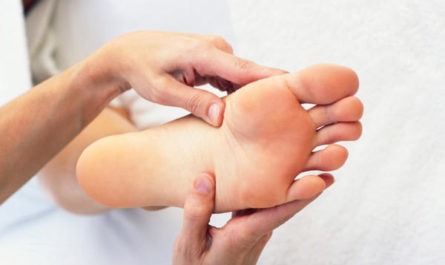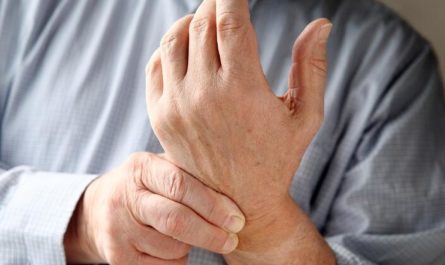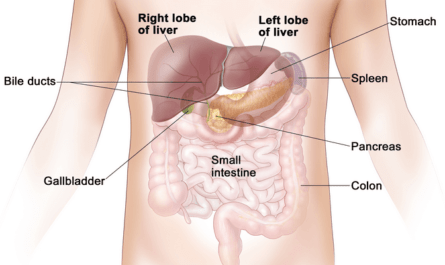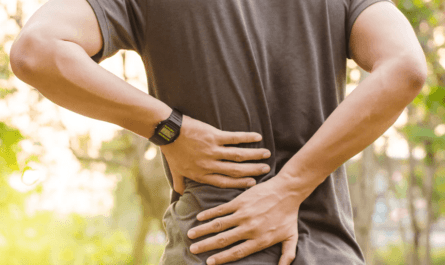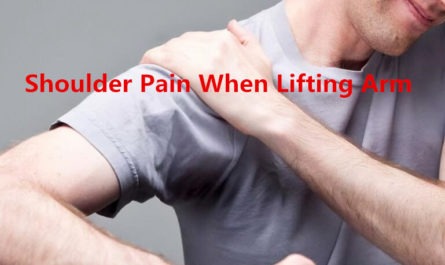Your kidneys are a pair of bean-shaped organs below the ribs, behind your belly, and on each side of your spine. Each kidney is about four inches long, almost the size of your fist. These organs are responsible for removing wastes, filtering your blood, controlling your body’s fluid balance, and maintaining the proper levels of electrolytes.
Each kidney has a million small filters called nephrons. Your kidneys filter 120 to 150 quarts of blood daily, producing one to two quarts of urine composed of wastes, minerals, salt, and extra fluid. The filtered blood circulates back into your body. Kidneys also help keep your blood healthy by producing erythropoietin (EOP), a hormone that makes red blood cells.
Flank or kidney pain can signify a urinary tract infection or kidney infection. Other possible causes are kidney stones and cysts. If you are experiencing acute, sharp pain, it is best to see your doctor to rule out any severe conditions.
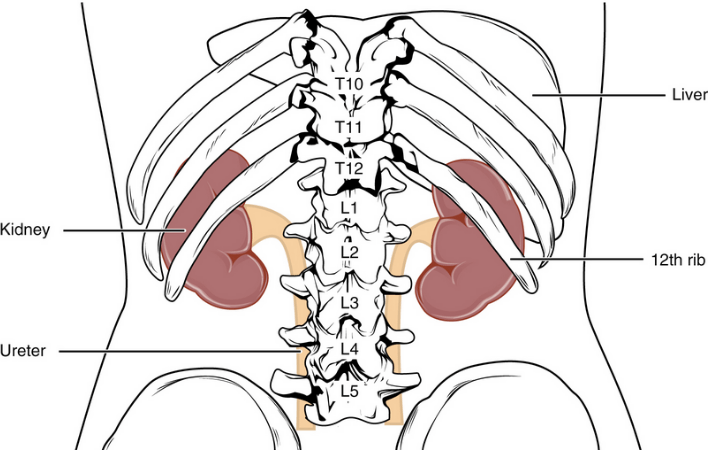
Location of your kidneys
Kidneys are two organs shaped like a bean on either side of the spine. They are located below the rib cage, behind the abdomen, and under the liver. The right kidney sits a bit lower than the left, as the most significant part of the liver is on the right side of the abdomen.
Most problems or infections with your kidney cause middle back pain or flank pain. However, the pain is not always felt where the kidneys are located. Medicine Net says flank or renal pain can be felt anywhere between your lowest ribs and buttocks. In some cases, the pain may radiate to your abdominal area.[1]
The pain can be felt on the right or left side of the back, depending on its underlying cause. But sometimes, kidney pain may affect both sides of your back. Although it can be hard to distinguish between back pain and kidney pain, it usually comes with other symptoms.
The function of the kidneys
The main function of the kidneys is to filter the blood and remove waste products, such as urea, creatinine, and uric acid. This process is called glomerular filtration. The kidneys also reabsorb important substances, including glucose, amino acids, and electrolytes, from the filtered blood.
In addition, the kidneys also help regulate the levels of electrolytes and other substances in the body. They produce an enzyme called renin that helps regulate blood pressure. By controlling the amount of sodium and water in the body, renin helps regulate blood pressure.
In addition to these functions, the kidneys produce hormones that control red blood cell production, calcium metabolism, and blood pressure.
Common symptoms of kidney pain
1. Pain in the flank– Pain in the flank is a common symptom of kidney pain and can feel like a dull ache or sharp pain. It can range from mild to severe and is typically located on either side of the lower back, just above the hips. It may be accompanied by nausea, vomiting, fever, and chills.
2. Abdominal Pain– Abdominal pain is another common symptom of kidney pain and can feel like a cramping or sharp pain. It may be accompanied by tenderness in the lower back and abdominal area, nausea, vomiting, and fever.
3. Blood in Urine– Blood in the urine, or hematuria, is a common symptom of kidney pain. Urine may appear pink, red, or brown and can be accompanied by abdominal pain, fever, and chills.
4. Frequent Urination– Frequent urination may be a symptom of kidney pain and can be accompanied by abdominal pain, a burning sensation when urinating, and a feeling of urgency.
5. Cloudy Urine– Cloudy or murky urine may also be a symptom of kidney pain and can be accompanied by abdominal pain, a burning sensation when urinating, and a feeling of urgency.
6. Fatigue– Fatigue is a common symptom of kidney pain accompanied by abdominal pain, nausea, and vomiting.
7. Loss of Appetite– Loss of appetite is another common symptom of kidney pain and can be accompanied by abdominal cramping or pain, nausea, and vomiting.
8. Swelling of Hands and Feet– Swelling of the hands and feet is another symptom of kidney pain and can be accompanied by abdominal pain, nausea, and vomiting.
Different Causes of Kidney Pain
Most flank pain or kidney pain occurs around the location of your kidneys. The pain and location also depend on the underlying cause of kidney infections or diseases that can cause pain in other body areas.
#1. Urinary Tract Infection
Urinary tract infection is an infection in any part of the urinary system – the urethra, bladder, ureters, and kidneys. In most cases, the infection involves the lower urinary tract, the urethra, and the bladder. This condition occurs when bacteria enter the urinary tract and multiply in the bladder.
The common signs and symptoms of UTI include a burning sensation when urinating, strong-smelling urine, persistent urge to urinate, urine that looks bright pink, red, or cloudy, and pelvic pain in women.
Doctors often treat this condition with antibiotics. Besides medications, drinking plenty of water is essential, as avoiding drinks that irritate your bladder and emptying your bladder after intercourse. Avoid feminine products that can irritate the genital area.
#2. Kidney Stones
Kidney stones are hard deposits of salts and minerals in the kidneys. These stones occur when your urine becomes concentrated and allows minerals to stick together and crystallize.
Kidney stones may cause symptoms when moving around the kidney or passing into the ureter. You may experience severe pain below the ribs, foul-smelling or cloudy urine, nausea and vomiting, pain during urination, and pain that radiates to the groin and lower abdomen.[2]
Other symptoms include fever and chills, urinating more often than usual and in small amounts, and pink, brown or red urine. Small stones can be treated with pain relievers, drinking water, and medical therapy.
More extensive treatment may be required for large stones, such as surgery, parathyroid gland surgery, and sound waves.
#3. Kidney Infection (Pyelonephritis)
Pyelonephritis is a urinary tract infection that starts in the bladder or urethra and travels to your kidneys. This condition requires immediate medical attention.
If not treated properly, it can damage the kidneys permanently. Bacteria can enter your bloodstream and may result in severe infection.
An infection’s signs and symptoms may include chills, fever, flank, groin, or back pain, frequent urination, and abdominal pain. You may also experience pain or burning sensation when urinating, blood or pus in the urine, nausea, vomiting, and urine that is cloudy or smells blood. Doctors may prescribe antibiotics as the first line of treatment. It is also vital to stay hydrated and avoid delaying urination.
#4. Kidney Cysts
Another possible cause of kidney pain is a cyst around a pouch of fluid that develops on or in the kidney. Kidney cysts can be linked to other severe disorders that may damage the function of your kidneys.
But in most cases, these noncancerous cysts rarely cause further complications. Although the exact causes aren’t clear, its symptoms may include upper abdominal pain, fever, and dull pain in your side or back.
Kidney function and imaging tests are required to diagnose kidney cysts. If it doesn’t interfere with your kidney function and there are no symptoms, treatment may be unnecessary. For cysts that cause pain and other symptoms, procedures include puncturing and draining the cysts and surgery to eliminate the cyst.
#5. Blood Clots
Renal vein thrombosis is a blood clot that forms in one or both renal veins. The two renal veins are responsible for draining oxygen from your kidneys.
According to Medicine Net, blood clots can cause severe damage to your bean-shaped organs and may result in other life-threatening conditions.
The most common symptoms of renal vein thrombosis include lower back pain, decreased urine output, and bloody urine. Other symptoms include fever, hip pain, nausea, and vomiting.[3]
Treatment for this problem depends on the size of the clot and its location. For small blood clots, doctors may recommend rest until the lump goes away and symptoms improve. Your physician may also prescribe blood thinners or thrombolytic medication to prevent or dissolve existing clots. In cases of severe RVT, surgery may be required to remove lumps.
#6. Chronic Kidney Disease
Also called chronic kidney failure, chronic kidney disease is the gradual loss of kidney function due to different conditions and diseases. Possible causes include high blood pressure, polycystic kidney disease, diabetes, kidney stones, enlarged prostate, vesicoureteral reflux, and recurrent kidney infection.
Symptoms of chronic kidney disease may include vomiting, nausea, sleep problems, chest pain, shortness of breath, decreased mental sharpness, fatigue, and weakness.
Other signs are hypertension, loss of appetite, swelling of ankles and feet, muscle twitches, and cramps. The treatment for this disease depends on the underlying cause. However, chronic kidney disease has no cure but can be treated.[4]
If the kidneys can no longer keep up with fluid and waste clearance, dialysis or a kidney transplant will be required. Depending on your situation, doctors may recommend a special diet to limit the work of your kidneys.
#7. Diabetes
Diabetic kidney disease is a complication that develops in individuals with diabetes. When this occurs, the filters of the kidneys become damaged.
Studies show that 1 out of 4 people with diabetes have kidney disease, making it difficult for the organs to filter blood. This causes toxins and wastes to build up in the body and may cause other health issues.
Having diabetes for a long time increases the risk of damaging your kidneys. People with diabetes are more likely to experience kidney disease if blood pressure or blood glucose is too high. Those who smoke, are overweight, are not active, have heart disease, don’t follow eating plans, and have a family history of kidney disease or failure are more likely to get this condition.
#8. Kidney Injury
A blow to your back might cause kidney pain if it injures your kidneys. But according to Mayoclinic, kidney injury may also occur after long-term use of certain medicines, a severe drop in blood flow to the kidneys, or ingesting poisons. [5] Kidney injuries may also reduce the amount of urine and cause nausea, vomiting, loss of appetite, and swelling in your legs.
#9. Kidney Cancer
Also called renal cancer, kidney cancer occurs when cells become cancerous or malignant and grow out of control, developing a tumor. Most kidney cancers first appear in the lining of tubules (tiny tubes) in the kidney. With imaging techniques like CT scans, kidney cancers can be found easily before they spread to other organs. These allow patients to treat the disease successfully.
Kidney cancer may not cause any signs or symptoms during the early stages. But in later stages, you may experience loss of appetite, tiredness, blood in urine, unexplained weight loss, pain in the back or side, and fever.[6] If you experience any symptoms that worry you, it is best to make an appointment with your doctor.
#10. Pregnancy
Pregnancy can also cause kidney pain as it increases the risk of developing blood clots or urinary tract infections, which can cause back pain. Because the uterus is growing, it may prevent normal urine flow and cause infections.
You can reduce kidney pain by drinking lots of water, consuming lemon juice, eating more fruits and vegetables, and basil leaves in your salad daily. Although UTIs are common among pregnant women, it is best to visit your doctor for a proper diagnosis.
#11. Hydronephrosis
Hydronephrosis is the swelling of one or both kidneys, which happens when urine cannot drain properly from a kidney and gathers in the organ. This condition does not always show any signs, but when they occur, symptoms of hydronephrosis may include fever, frequent need to urinate, pain in the back and side, nausea, and vomiting.[7]
The common causes of hydronephrosis are vesicoureteral reflux and partial blockage in the urinary tract. Vesicoureteral reflux occurs when urine goes backward through the ureter from the bladder into the kidney. Doctors may require a blood test, urine test, ultrasound imaging exam, or X-ray to diagnose hydronephrosis.
Treatments will depend on the underlying cause, but many cases of this condition resolve on their own. In severe circumstances, surgery may be necessary to correct the reflux or remove the blockage.
How to prevent kidney pain?
1. Avoiding High-Risk Activities: Avoiding activities that can increase the risk of kidney pain, such as contact sports and risky activities such as rock climbing, can help to prevent kidney pain. Wearing protective gear, such as helmets and padding, during such activities can also help to reduce the risk of kidney pain.
2. Maintaining Proper Hydration: Proper hydration is key to reducing the risk of kidney pain. Drinking plenty of water throughout the day can help to keep the body hydrated and reduce the risk of kidney pain.
3. Eating a Healthy Diet: Eating a healthy diet with plenty of fruits, vegetables, and lean proteins can help to reduce the risk of kidney pain. Avoiding processed and sugary foods can also help to reduce the risk of kidney pain.
4. Exercising Regularly: Regular physical activity can help to reduce the risk of kidney pain. Exercising can help to strengthen the muscles and improve circulation, which can help to reduce the risk of kidney pain.
5. Managing Stress: Stress can cause a variety of health issues, including kidney pain. Managing stress through relaxation techniques, such as yoga and meditation, can help to reduce the risk of kidney pain.
6. Avoiding Certain Drugs: Certain drugs, such as non–steroidal anti–inflammatory drugs (NSAIDs) and certain antibiotics, can cause kidney pain. Avoiding these drugs, or taking them only as prescribed by a doctor, can help to reduce the risk of kidney pain.
When to See a Doctor
Pain in your middle back that radiates to your groin or abdomen is usually a sign of a severe health problem. It is essential to visit your doctor immediately if you suspect kidney pain. The warning signs of kidney problems are:
- High blood pressure
- Swelling of your hands and feet
- Sudden sharp flank pain
- Blood in your urine
- A dull, constant one-sided pain in your side or back
- Painful and frequent urination
Call your doctor if you also experience fatigue, body aches, and fever. Seek medical attention if you have sudden, severe kidney pain, even if blood is not in your urine.
Final Words
Without kidneys, our bodies would not maintain healthy blood pressure, keep essential minerals and water balance in our bloodstream, activate vitamin D for bones, increase the production of red blood cells, and extract waste and chemicals.
However, some diseases can increase the risk of kidney diseases, such as hypertension and diabetes. Kidney pain can be on the right, left, or both sides. The causes are diagnosed with a physical examination, a person’s history, lab tests, CT scans, and MRIs.
Treatment for the pain depends on the leading cause, but in many cases, acetaminophen (Tylenol), ketorolac (Toradol), and ibuprofen (Motrin) are used to alleviate the pain. In cases of bacterial infections, antibiotics are prescribed by doctors. It is best to see a physician for proper diagnosis and prompt treatment for symptoms that worry you.


